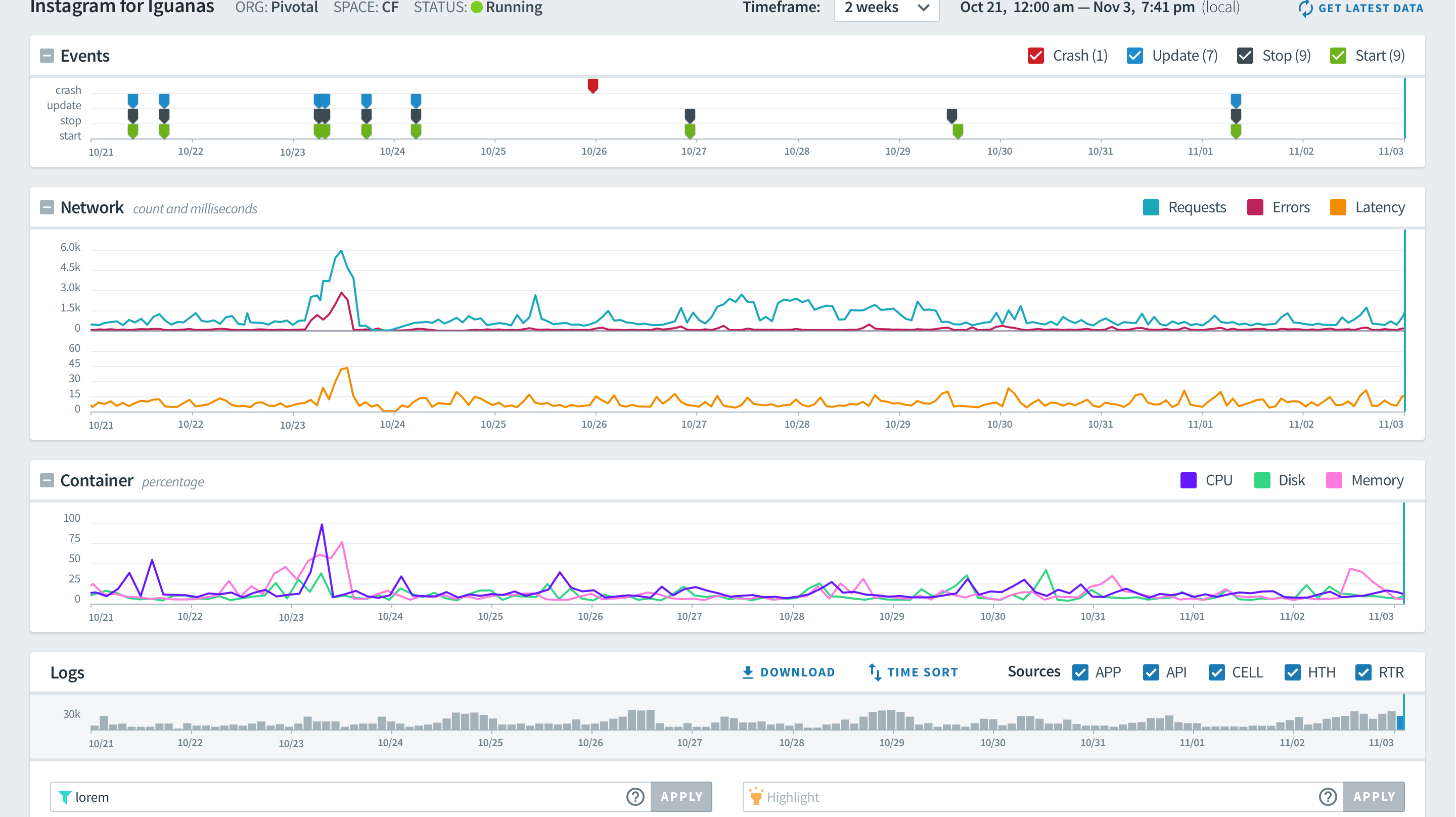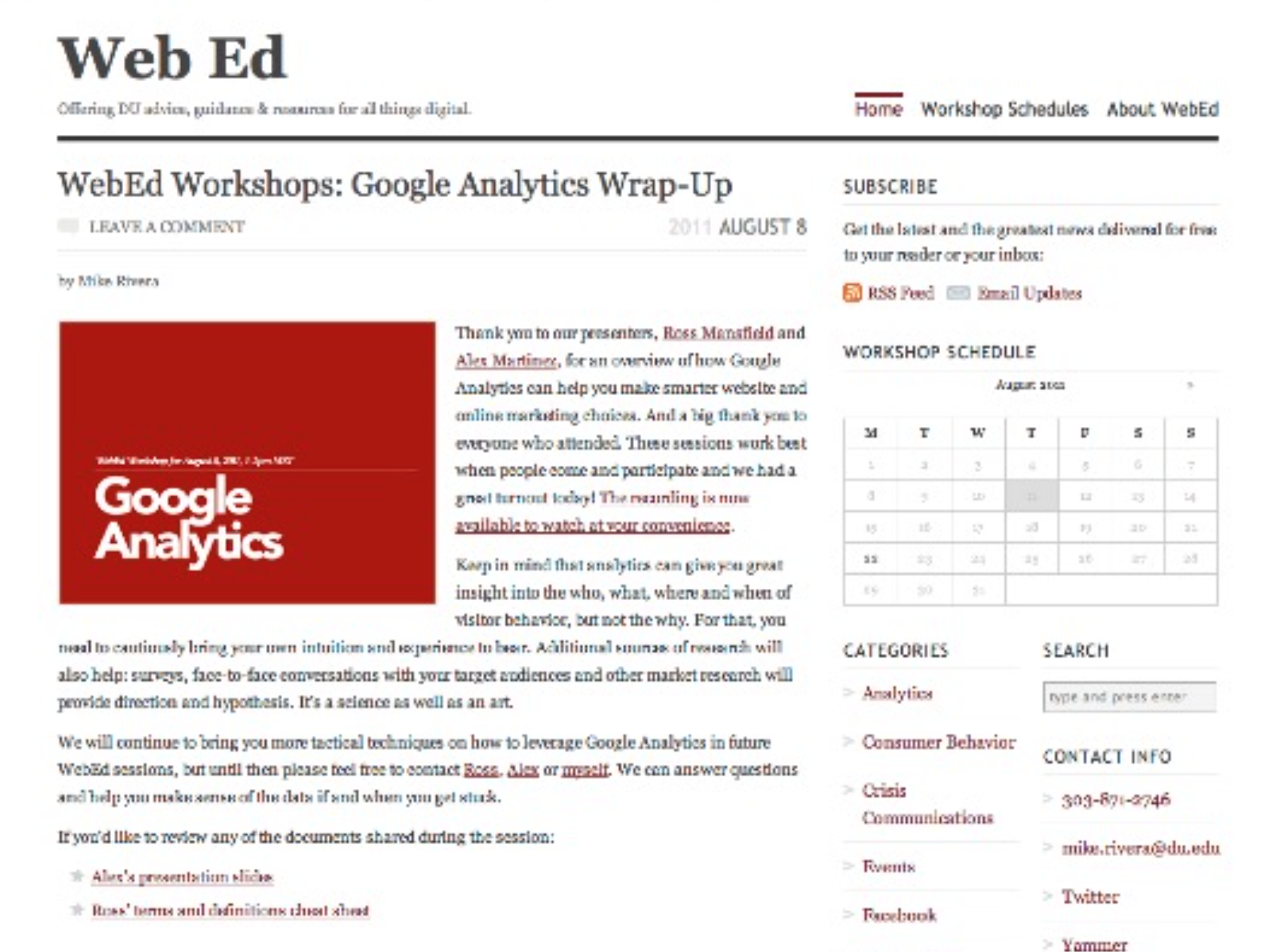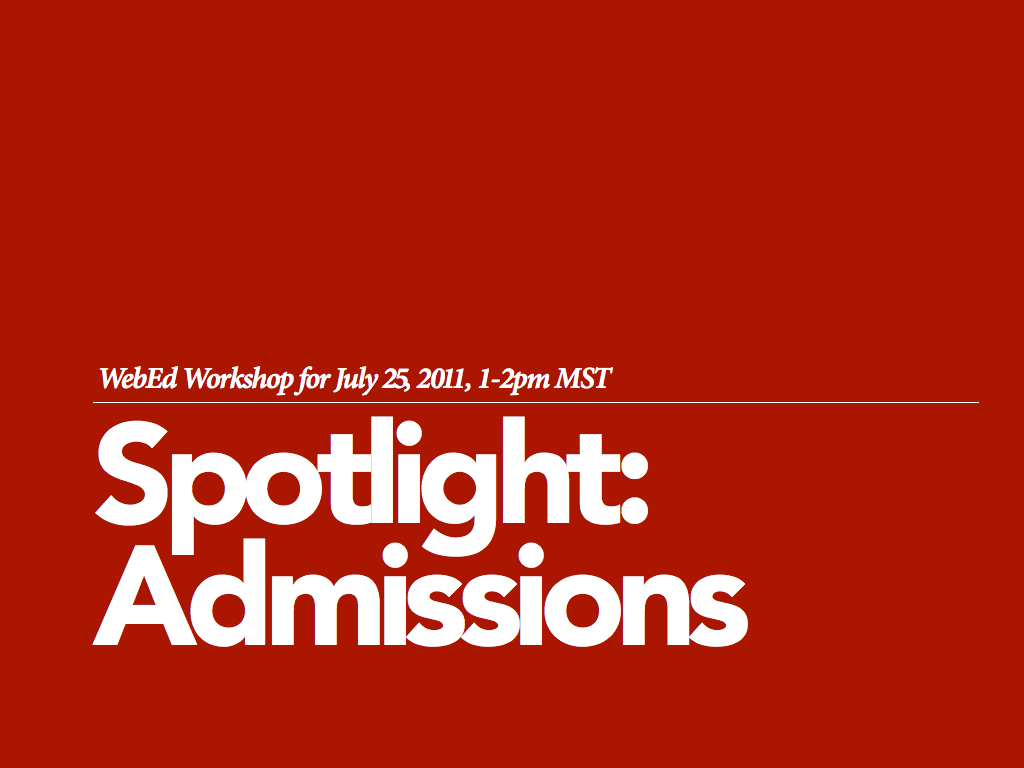Evolving silos into a community
University of Denver // 2010–2011
Situation
Most institutions of higher learning have a strong central brand but operate in a decentralized manner. The University of Denver was such a case—less a cohesive whole and more a loose consortium of schools, colleges, divisions and departments operating under a single banner. Because of this autonomy, the school's social media presence had fractured into hundreds of accounts competing with one another for attention and, often, for the same readers. Through conversation with administrators across the university, it was clear they needed training and support. But how could a diverse group be wrangled?
Building Community
DU's scattered organization led to a scattered online experience, where some groups had the people and resources to do what they wished while others could only muster paltry attempts at outreach to their audience. If I could bring people across campus to share their agendas, needs, and requests, then a supportive community could be established. That community could then raise the standard of the whole university's online experience.
To start, I canvased campus to identify anyone connected to online communications and invited them to join a communal portal that I would manage and curate. I chose Yammer (since acquired by Microsoft) as the online, asynchronous tool to support the endeavor. Once people and content began to appear, so too did the engagement from colleagues. A number of positive changes began to take shape:
1
Inexperienced social media managers found a much needed resource in the more seasoned members who participated.
2
People showcased their successful ideas and what went wrong in failed initiatives.
3
A network of liaisons grew. Those connections provided awareness of news and other content to share and piggy back on.
4
Everyone had an incentive to participate since they typically got more out than they put in. Growth snowballed.
I instituted offline, bi-weekly discussions to augment online activity. I invited subject matter experts to teach and discuss a wide range of topics such as Google analytics, crisis communications, writing for the web, FERPA rules, and more. I streamed and recorded each session for those who could not attend in person further enriching the onine community.
These in-person meetings expanded into a campus wide consulting service to give specific advice and guidance on digital efforts according to the needs of those in need. Along the same lines to all these activities, I also produced and presented data and insights in order to inform groups, plant seeds for further collaboration, and further foster a sence of community.


Moving Forward
If isolated social media practitioners banded together, they would forge a supportive community that could take advantage of pooled resources, learn from one another's successes and failures, and motivate themselves to collaborate on shared goals while still being true to their constituents. I embarked to create this community so that individuals could not only meet their own goals but do so in a manner that also benefited the university as a whole—which was a goal of mine as the manager of the university's flagship social media accounts.
Lessons Learned
I was lucky in that I was given the latitude and time to pursue these ideas. Seeding, growing and tending to a community, I came to find out, requires constant and concerted effort. I also benefitted from a tightly defined, closed community. No one was anonymous and people knew one another both professionally and personally. This dynamic effectively kept trolling and other negative behaviors at bay. Otherwise, that would have required significant effort to police.
In hindsight, I should have created a succession plan since I worked alone. Without it, I don't know what or how my replacement would have continued, if at all, to keep the community humming. A successful plan would have included outcomes, key people and resources, processes for the in-person events, a roadmap of topics to cover, access credentials to all tools, and my contact information to answer questions for a period of time after I left.









